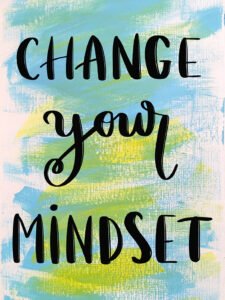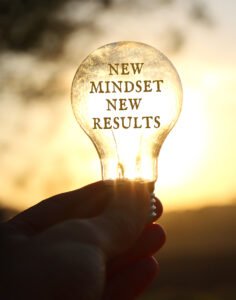Should you shift from a reactive to a proactive mindset to achieve more? In our fast-paced and unpredictable world, developing the right mindset allows us to navigate challenges effectively. Shifting our thoughts from reactive to proactive empowers us to control our lives and make better choices. Being proactive means we have a better handle on our problem. Also, we are more capable of planning and creating opportunities for personal growth. Before our suggestion on ways to adapt a proactive mindset, let’s highlight the differences between a reactive and proactive mindset.
Changing how you view things isn’t easy. Throughout our lives, we are told that things are the way they are. At no point are we told that we have the power to change it. Today I am telling you; you have the authority to change your mindset and become more positive.–Robert Norman
Reactive vs Proactive
In our daily lives, we often respond to situations either reactively or proactively. These two approaches represent distinct mindsets and have a significant impact on navigating life’s challenges.
The difference between being reactive and proactive lies not just in our mindset. It can also be how we choose to approach an event or situation. For instance, our ability to problem-solve and manage our time can determine if we are being reactive or proactive. Similarly, our decision-making skills as well can affect our approach. While reactive individuals choose to respond to events as they occur and without foresight, proactive individuals expect challenges, take the initiative, and actively shape their future. By embracing a proactive mindset, we can navigate challenges effectively, make informed decisions, and achieve our goals purposefully. Below is a comparison of a reactive vs. proactive mindset.
1. The Approach of a Reactive Or Proactive Mindset
Reactive individuals have a mindset that is primarily focused on responding to events as they occur. They are driven by external stimuli, emotions, or immediate pressures. In addition, their approach is often impulsive. Which means reacting without fully considering the consequences or evaluating the alternative.
Proactive individuals follow a different approach. They are forward-thinkers; they prepare for future challenges, and are ready to take the initiative, and act in advance. Proactive thinkers seek to understand the underlying cause of a problem and address it before it spiral. Their approach is deliberate, and centered on long-term planning.
2. The Difference When Problem-Solving
When faced with a problem, reactive individuals tackle it as it arises. Often, without analyzing the root causes. Their focus is on resolving the immediate issue rather than preventing similar problems in the future.
In contrast, proactive individuals approach problem-solving from a different angle. They engage in a standard process of identifying potential obstacles and taking steps to prevent them. Proactive problem-solvers are driven by a desire for long-term solutions and continuous improvement. Hence, resulting in an effective and sustainable outcome.
3. Reactive vs. Proactive And Time Management and Productivity
Reactive individuals may find themselves constantly in a state of dealing with urgent matters. A reactive approach often leads to a lack of proper time management and productivity.
Proactive individuals, on-the-other-hand, understand the value of planning and preparation. They allocate time and resources strategically. They also set clear goals and prioritize tasks accordingly. By investing upfront efforts in planning and organizing, proactive individuals avoid unnecessary stress.
4. Mindset And Decision-Making
Reactive decision-making is driven by immediate emotions, external pressures, or impulsive judgments. Decisions made in this state often lack a thorough understanding of options. Not to mention the potential consequences of a decision.
Proactive decision-makers, in contrast, take a more scrutinized approach. They gather relevant information and weigh alternatives. They also assess the potential long-term impact of their choices. Deliberate analysis is at the forefront of the proactive decision-making process. This result in a more informed and strategic choice.
5. Reactive vs Proactive and Adaptability
Reactive individuals are passive recipients of circumstances. They accept events as they unfold. In fact, struggling to adapt to changes or seek personal growth opportunities is not uncommon.
Proactive individuals, however, actively seek personal growth and development. They embrace challenges, take initiative, and continuously learn from their experiences. Proactive individuals are more resilient as they actively shape their own paths and respond proactively to changes and opportunities.
The benefits of being proactive Instead Of reactive
Now that we’ve shared a comparison of how a reactive mindset versus a proactive mindset. Let’s delve into the benefits of a proactive mind.
1. Enhanced Problem-Solving Abilities
Reacting to situations as they arise limits our ability to find optimal solutions. However, proactive individuals prepare for potential problems and take preemptive action. This approach allows for identifying and addressing underlying causes before they escalate into larger issues. By proactively analyzing challenges, a person who thinks proactively develops creative problem-solving skills and finds innovative solutions that would otherwise remain overlooked.
2. Increased Productivity and Time Management
Reactive thinking often leads to feeling overwhelmed. This state hinders productivity. Conversely, proactive individuals are more organized and better at time management. By planning, they can prioritize tasks and set realistic goals. In addition, proactive individuals are better equipped to avoid last-minute rushes. They meet deadlines consistently and achieve their objectives purposefully.
3. Improved Decision-Making Skills
Reactive decision-making is often driven by immediate emotions or external pressures, leading to impulsive choices that may have long-term consequences. In contrast, proactive individuals consider potential outcomes. They do this by gathering relevant information and evaluate various options. This intentional approach enables pro-actives to make informed choices. Ones that are aligned with their values and long-term goals. Proactive decision-makers are more likely to achieve desirable outcomes and experience greater satisfaction with their choices.
4. Personal Growth and Continuous Learning
Proactive individuals embrace personal growth and actively seek opportunities for self-improvement. They expand their knowledge, skills, and perspectives by taking the initiative when necessary, setting goals, and seeking new experiences. Proactive thinking encourages a mindset of continuous learning. This proactive pursuit of growth fosters resiliency, adaptability, and a greater sense of fulfilment.
5. Improved Relationships and Collaboration
Reacting to conflicts and challenges often leads to strained relationships and in-effective communication. In retrospect, proactive individuals approach interactions with empathy. They have the foresight and desire to understand different perspectives. A proactive mindset foster healthy relationships and builds effective collaboration. They are also more likely to inspire trust, encourage teamwork, and create an environment that encourages open dialogue and mutual respect.
8 Ways To Adapt A Proactive Mindset
After exploring the difference and benefits associated with a proactive and reactive mindset, let’s look at ways to adapt a proactive mindset.
We should all keep in mind, being proactive instead of reactive requires a conscious shift in mindset and a commitment to changing how to approach circumstances and situations. Here are eight steps to get started.
1. Better Self-awareness
Begin by recognizing and acknowledging reactive tendencies. Reflect on how someone would typically react to situations. Identify the patterns that lead to reactive behavior. Understanding a default reaction to a situation or event will help to be more self-aware. This is especially so when the reaction is more reactive. This awareness helps to interrupt the pattern.
Related: Mindfulness
2. Adopt a proactive mindset
It’s what this entire post is about. However, here is another stance. To embrace the belief that you have the power to influence your circumstances and outcomes can make a difference in how to approach a problem. Understand that being proactive means taking responsibility for your choices and actions rather than being a passive recipient of events. Cultivate a mindset that focuses on problem-solving, growth, and taking initiative.
3. Anticipate and plan
Develop the habit of anticipating potential challenges and opportunities in different areas of life. Look ahead and identify potential obstacles or areas where proactive action can yield positive outcomes. Set goals, create action plans, and develop strategies to address these situations before they arise.
4. Develop self-discipline
Being proactive requires discipline and consistency. Train yourself to think before reacting impulsively. Practice pausing and taking a step back when faced with a situation, allowing yourself time to assess the situation, consider your options, and choose the best course of action.
5. Prioritize and set goals
Determine priorities and establish clear, meaningful goals. This will help with focusing on what truly matters to. Break down goals into actionable steps and create a timeline for accomplishing them. Regularly review and adjust goals as necessary.
6. Enhance problem-solving skills
Invest in developing problem-solving skills. Learn to analyze situations objectively by identifying underlying causes. Then consider multiple solutions. Seek feedback from others and be open to different perspectives. Develop creative and critical thinking abilities to find innovative solutions.
7. Take a proactive approach
Identify potential challenges or opportunities, then take decisive action. Actively work on preventing problems or creating opportunities rather than merely reacting to them. Being proactive is seeking information and gathering resources to take the next step.
8. Learn from experiences
Reflect on experiences and learn from them. Assess how proactive actions can influence outcomes and identify areas for improvement. Continuously evaluate and adjust the approach. Make changes base on lessons learned. Harvard Business Review published an article on how to make great decision, quickly. Read it here.
Summary
Remember that becoming proactive is a journey that requires consistent effort and practice. It’s important to be patient and celebrate every effort and achievement toward being proactive. With time and persistence, adapting a proactive mindset can empower every aspect of how to approach circumstances in life.
Shifting thought processes from reactive to proactive is a transformative choice. One that can significantly improve lives. Adopting a proactive mindset enhances problem-solving abilities, increases productivity and time management skills. In addition, it can improve decision-making, fosters personal growth, and nurture meaningful relationships. Also consider that embracing a proactive approach can empower efficiency and shape our future. Start today to unlock your full potential. Strive to be proactive, leverage the benefits of a proactive mindset.










